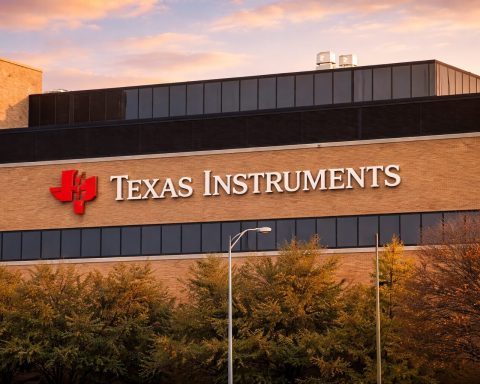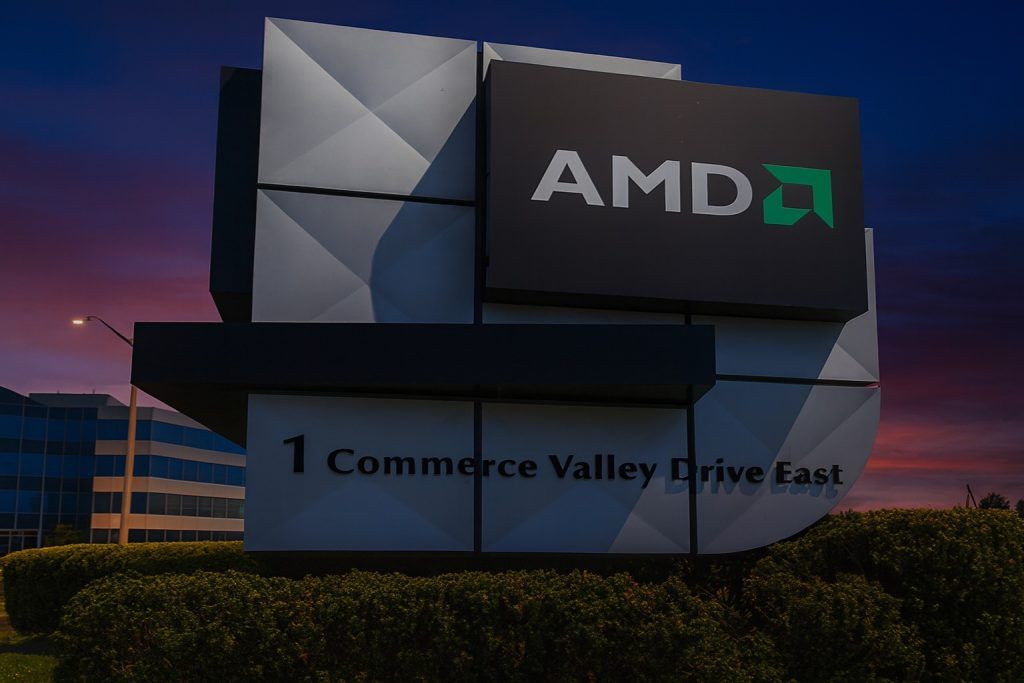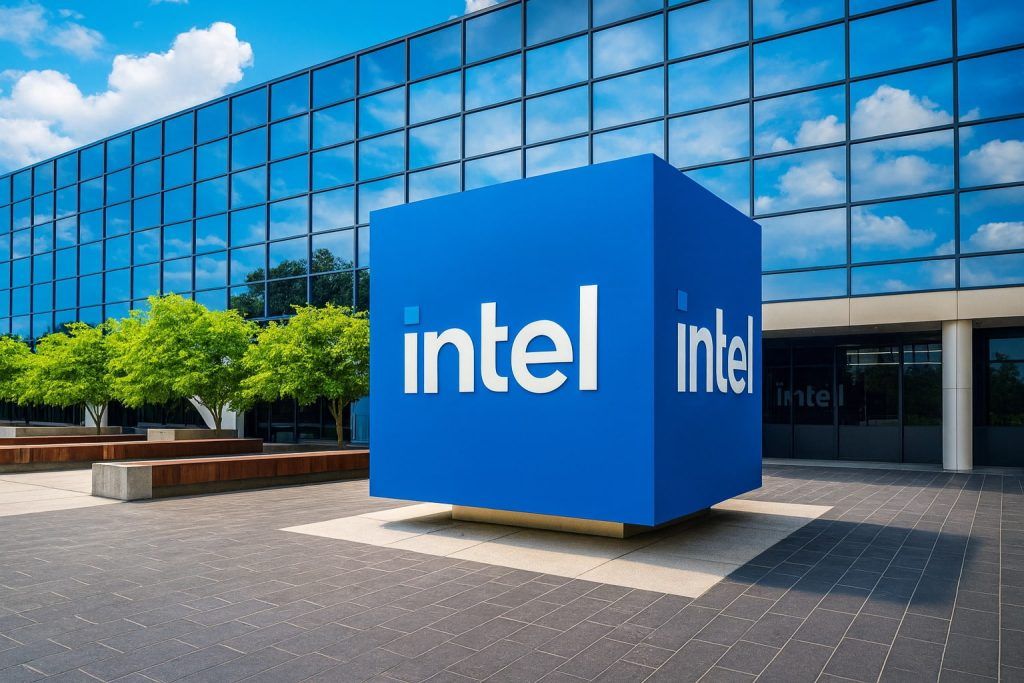Meta Platforms (NASDAQ: META) ended Friday’s session almost unchanged despite a barrage of headlines about hedge-fund selling, AI-fueled spending plans, new data centers and fresh scrutiny of its ad business. The stock closed around $609.46, giving the company a market value of roughly $1.5 trillion. That leaves META about 23% below its August peak near $790, but still roughly 27% above its 52‑week low around $480. [1]
After the closing bell, Meta was trading just a touch higher in thin after-hours action, suggesting that traders are still digesting a flood of AI- and regulation-related news rather than making big directional bets. [2]
Meta stock price today: muted move after a brutal month
Despite today’s flat finish, Meta remains in correction mode:
- Close: ~$609.46
- 1‑day move: effectively flat (around ±0.1%)
- 52‑week range: ~$479.80 – $796.25
- Market cap: ~$1.54 trillion
- Trailing P/E: about 27x earnings, with a price‑to‑sales multiple over 8x. [3]
According to Trefis, the stock is down about 15% over the past month, even though recent results show “Very Strong” growth and profitability metrics – their model labels META “Fairly Priced” rather than cheap, given its premium valuation. [4]
Turnover remains heavy: trading volume today hovered around 20–21 million shares, well above many pre‑AI years, reflecting META’s central role in both the AI boom and its current shake‑out. [5]
Hedge funds rotate: Tiger Global slashes its Meta stake
One of today’s most market-sensitive headlines came from Tiger Global Management. A new 13F filing shows the Chase Coleman–run hedge fund cut its Meta stake by roughly 63% in Q3, down to about 2.8 million shares worth approximately $2.1 billion at the time of the filing. [6]
The Reuters report highlights two important angles for Meta investors: [7]
- Tiger Global is not abandoning tech; it simultaneously took a new position in Netflix and other growth names, suggesting this is a portfolio rebalancing away from Meta, not a wholesale retreat from the sector.
- The reduction follows Meta’s post‑earnings slide, as investors reassess how much AI infrastructure spending is acceptable before margins suffer too much.
At the same time, other institutions are trimming or adding:
- Bank of New York Mellon cut its META position by 5.5% in Q2, but still owns about 0.52% of the company, worth roughly $9.7 billion, and keeps Meta as its 5th‑largest holding. [8]
- Westside Investment Management, a smaller fund, increased its stake by 6.2%, now holding ~15,000 shares (~$11 million) and making META its 9th‑largest position. [9]
Overall, around 80% of Meta shares are held by institutions and hedge funds, showing that despite profit‑taking in some quarters, the stock remains deeply embedded in professional portfolios. [10]
Analysts debate Meta’s AI spending: downgrade vs. long‑term optimism
The central question for Wall Street right now is simple: how much AI capex is too much?
Erste Group downgrade on AI capex fears
A widely circulated note from Erste Group continues to echo through today’s coverage. The firm downgraded Meta from “Buy” to “Hold” on November 10, arguing that: [11]
- Meta expects a “significant acceleration” in AI‑related spending in 2026, with capital expenditure “significantly higher” in 2026 than in 2025.
- That heavier capex plus reduced share buybacks leaves “limited upside potential” at the current valuation, even though fundamentals remain strong.
Insider‑focused outlets and trading blogs amplified the downgrade this morning, framing META as a great business whose AI ambitions might be out‑running its free‑cash‑flow profile in the near term. [12]
Earnings recap: strong ads, heavy AI bill
Recent Q3 results give context to those fears: [13]
- Revenue: $51.2–51.24 billion, +26% year‑over‑year, comfortably ahead of consensus.
- Ad engine: about $50.1 billion of that came from advertising, with ad impressions up ~14% and average ad prices up ~10%.
- Users: daily active users grew around 8% year‑over‑year.
- Free cash flow: fell from $15.5 billion a year ago to about $10.6 billion, as AI infrastructure spending and a one‑time ~$15.9 billion tax charge hit the bottom line.
On the earnings call, CFO Susan Li lifted guidance for 2025 total expenses to $116–118 billion and capex to $70–72 billion, and warned that 2026 dollar capex growth will be “notably larger” than 2025, implying well over $100 billion in capex next year to support AI workloads. [14]
That spending profile is exactly what has some analysts pulling back – and others leaning in.
Bulls: “Hit creates opportunity”
On the bullish side:
- A fresh Motley Fool / Nasdaq article titled “Meta Stock Has Taken a Massive Hit. Time to Buy?” argues that the recent slide is largely about uncertainty, not a broken business. It notes the same 26% revenue growth, robust user metrics and a still‑strong free cash flow engine, while framing AI capex as a potentially moat‑building investment if it pays off. [15]
- Zacks flagged Meta as one of the most heavily searched stocks on its platform today, underscoring elevated retail interest even as pros debate capex. [16]
- Trefis reiterates that Meta’s growth, profitability and balance sheet are “Very Strong” relative to the market, and considers the stock “Fairly Priced” at current levels despite a high multiple. [17]
Consensus still skews positive: MarketBeat and other aggregators show dozens of Buy ratings versus a handful of Holds and virtually no Sells, with an average 12‑month price target in the $825–850 range, implying substantial upside from today’s ~$609. [18]
Meta doubles down on AI infrastructure and data centers
Even as analysts fret about capital intensity, Meta spent today reminding the market that it’s not slowing down on AI infrastructure.
30th data center in Wisconsin
In a newly updated Newsroom post, Meta detailed plans for its 30th data center in Beaver Dam, Wisconsin, explicitly designed to “enable ambitious AI workloads.” [19]
Key points:
- Investment in Beaver Dam will exceed $1 billion, supporting more than 100 permanent jobs and over 1,000 construction jobs at peak.
- Meta will underwrite nearly $200 million in energy infrastructure tied to the facility.
- The company is donating $15 million to a local energy assistance fund and partnering with Ducks Unlimited and others to restore 570 acres of wetlands and prairie around the campus, tying AI infrastructure to community and environmental commitments. [20]
$27 billion Hyperion data center JV with Blue Owl
Separately, Meta updated its October announcement of a joint venture with funds managed by Blue Owl Capital to develop the Hyperion data center campus in Richland Parish, Louisiana – another AI‑focused project. [21]
- Blue Owl‑managed funds will own 80% of the JV, Meta 20%.
- The partners have committed to roughly $27 billion of total development costs for buildings and long‑lived power, cooling and connectivity infrastructure.
- Blue Owl contributed about $7 billion in cash, while Meta received a one‑time ~$3 billion distribution for assets it contributed to the JV. [22]
The structure helps offload some upfront capital while still giving Meta access to hyperscale AI infrastructure – but it also reinforces the narrative that the company is going all‑in on AI data centers for the long haul.
Community grants tied to data centers
To soften the political and social optics of massive AI buildouts, Meta also announced an expansion of its Data Center Community Action Grants program: [23]
- Applications for 2026 grants are now open, with the program being extended to seven additional data center communities across the U.S.
- To date, Meta says it has allocated over $74 million to data center communities globally, including $24 million via these grants, funding everything from STEAM education to tech access projects.
For investors, these announcements underscore that AI infrastructure isn’t a short‑term experiment; it’s baked into Meta’s long‑term operating model, with both financial and reputational implications.
Inside Meta’s AI‑first workplace: performance reviews and layoffs
On the human‑capital front, Meta is also re‑wiring how employees work and get evaluated, again around AI.
AI becomes a core part of performance reviews
Multiple reports today, led by Business Insider and summarized by outlets like Bloomberg, Techmeme and GuruFocus, describe a major overhaul of Meta’s internal review process: [24]
- Starting in 2026, Meta will formally evaluate employees on their “AI‑driven impact” as a core expectation of performance.
- Workers are being encouraged to showcase AI‑related achievements in current self‑reviews, even before the metric becomes official.
- The company is deploying an internal “AI Performance Assistant,” allowing staff to use tools like its own Metamate assistant (and even external systems like Google’s Gemini) to help draft reviews and highlight productivity gains.
- Meta has also rolled out an internal AI “game” called Level Up to encourage adoption of AI tools in daily workflows.
Separate coverage this week noted that Meta cut around 600 jobs in an AI division earlier this year, even as remaining employees increasingly lean on Metamate to generate performance‑review drafts – a sign of how deeply AI is being embedded into its culture. [25]
For investors, the move signals that AI isn’t just a product or infrastructure bet for Meta – it’s a workplace transformation, with potential productivity upside but also risks around morale, fairness and regulatory scrutiny of algorithmic management.
Regulatory and reputational risks: scam ads and EU interoperability
Internal documents: billions from scam ads
Another story gaining traction today revolves around fraudulent advertising on Meta’s platforms. A report from CPI, based on internal Meta documents reviewed by Reuters, alleges that: [26]
- Meta internally projected that roughly 10% of its 2024 revenue – about $16 billion – came from ads tied to scams, illegal goods or other prohibited content.
- Users across Facebook, Instagram and WhatsApp were exposed to an estimated 15 billion high‑risk scam ads per day in 2024, with even more exposure when non‑paid “organic” scams are included.
- Critics argue that Meta’s content‑removal thresholds and enforcement tools are too lenient, allowing obvious scams to linger in order to preserve ad revenue.
Meta disputes aspects of the figures and highlights ongoing safety investments, but the documents strengthen calls for tougher regulation of digital advertising, including potential advertiser‑verification rules, higher fines and even compensation funds for victims.
For shareholders, this raises the specter of future regulatory costs and reputational damage that could offset some of the company’s AI‑driven growth.
WhatsApp opens up to third‑party messaging in Europe
On a more positive regulatory note, Meta also spotlighted progress in complying with the EU’s Digital Markets Act (DMA). A new Newsroom post explains that WhatsApp will soon let users in Europe exchange messages with third‑party apps that choose to interoperate with the platform. [27]
- Early partners include smaller messaging services BirdyChat and Haiket, with support rolling out across Europe on both Android and iOS.
- Interoperable “third‑party chats” will support text, images, voice notes, video and files, with group chats to follow.
- Meta stresses a “privacy‑first” approach, requiring third‑party services to meet end‑to‑end encryption standards equivalent to WhatsApp’s. [28]
Investors should see this as:
- A compliance win that helps reduce regulatory overhang in Europe.
- A sign that Meta is willing to open formerly closed ecosystems in order to keep its messaging apps on the right side of powerful regulators – potentially a template for future interoperability mandates.
Macro overhang: AI bubble worries and Burry’s “depreciation gripe”
Today’s Meta narrative also sits inside a bigger conversation about AI valuations and Big Tech accounting.
- An Investor’s Business Daily commentary on a “bursting AI stock bubble” estimates that the AI sell‑off has already wiped out around $1.8 trillion in market value, mentioning META alongside other high‑profile AI names. [29]
- A widely cited Bloomberg piece (echoed by Economic Times) highlights Michael Burry’s concern that Big Tech’s soaring profits may be artificially inflated by aggressive depreciation schedules on multi‑billion‑dollar AI data‑center builds. The article explicitly points to companies like Meta, Microsoft and Alphabet as examples where investors may be underestimating the true long‑term cost of AI capex. [30]
Those two themes – valuation excess and accounting scrutiny – help explain why Meta shares have struggled to bounce despite strong fundamentals.
How Wall Street is valuing META after today
Putting it all together, here’s where Meta stands by the numbers: [31]
- Valuation
- P/E: ~26–27x
- Price‑to‑sales: ~8x
- Price‑to‑free‑cash‑flow: mid‑30s
- Profitability (last 12 months)
- Operating margin: ~43%
- Net margin: ~31%
- Operating cash‑flow margin: ~57%
- Balance sheet & capital returns
- Debt‑to‑equity: ~0.15
- Cash‑to‑assets: ~15%
- Annual dividend: about $2.10 per share (yield ~0.3–0.35%), plus continued share buybacks, though buyback pace has slowed with rising AI capex.
- Street view
- Analyst mix: dozens of Buys, a handful of Holds, virtually no Sells – overall Strong/Moderate Buy.
- Average 12‑month price target: roughly $825–850, with some targets above $900 and a low end around mid‑$600s.
- Independent AI‑scoring services still rank Meta highly on growth, profitability and financial stability, while flagging capital intensity and valuation as key risks.
In plain terms: the business looks excellent, the balance sheet sturdy, but the bill for AI is enormous and rising.
What today’s flat move in META could mean for investors
With all of this swirling, the fact that Meta’s stock barely moved today looks less like indifference and more like a stalemate between two stories:
- The bull case
- Meta runs one of the world’s most profitable ad machines, with double‑digit revenue growth and enormous margins.
- It is aggressively building AI infrastructure, tooling and workplace culture that could deepen its competitive moat and unlock new revenue streams over time.
- Data centers, WhatsApp DMA compliance, and AI‑first HR policies all point to a company acting from strength, not desperation.
- The bear (or cautious) case
- AI capex is exploding, with 2026 spending likely above $100 billion and unclear returns.
- Big investors like Tiger Global are taking cash off the table, while prominent skeptics question whether Big Tech’s AI‑era accounting accurately reflects economic costs. [32]
- Regulatory and reputational risks – from scam ads to AI‑driven performance monitoring – could raise Meta’s cost of doing business in future years.
For readers watching META from the sidelines, today’s close around $609 doesn’t settle the debate; it just marks another checkpoint in a larger re‑rating of AI leaders. Anyone considering the stock will likely want to track:
- Updates to Meta’s 2026 capex and expense guidance.
- Evidence that AI features (in ads, consumer products and internal tools) translate into incremental revenue or margin, not just higher costs.
- The evolving regulatory landscape around online scams, privacy and workplace AI.
For now, the market seems to be saying: Meta’s AI bet is too big to ignore – and too big to value with complete confidence.
References
1. www.google.com, 2. stockanalysis.com, 3. www.marketbeat.com, 4. www.trefis.com, 5. stockanalysis.com, 6. www.reuters.com, 7. www.reuters.com, 8. www.marketbeat.com, 9. www.marketbeat.com, 10. www.marketbeat.com, 11. www.tipranks.com, 12. www.insidermonkey.com, 13. www.nasdaq.com, 14. www.nasdaq.com, 15. www.nasdaq.com, 16. finviz.com, 17. www.trefis.com, 18. www.marketbeat.com, 19. about.fb.com, 20. about.fb.com, 21. about.fb.com, 22. about.fb.com, 23. about.fb.com, 24. www.businessinsider.com, 25. timesofindia.indiatimes.com, 26. www.pymnts.com, 27. about.fb.com, 28. about.fb.com, 29. swingtradebot.com, 30. news.bloomberglaw.com, 31. www.marketbeat.com, 32. www.reuters.com








